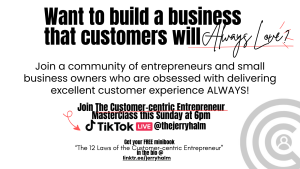
The Perils of Product Obsession: Why Customer-Centricity is Key to Business Success
Many entrepreneurs, driven by a passion for their creations, fall into the trap of product obsession. They believe that superior product quality alone will guarantee success, assuming customers will automatically recognize and choose the "better" product, regardless of price, availability, marketing, or convenience. This can be a critical misstep, particularly in dynamic and competitive markets.
The Competitive Intelligence Gap
A common manifestation of product obsession is neglecting competitive dynamics. Entrepreneurs may be so convinced of their product's superiority that they fail to conduct proper market surveys or analyze competitor strategies. This stems from a fundamental misunderstanding of how customers make purchasing decisions. Rarely do customers choose products solely based on objective quality metrics. Instead, they consider a complex interplay of factors, including:
- Price: Affordability is a key consideration for many consumers.
- Convenience: Ease of access and purchase are crucial.
- Brand Familiarity: Established and trusted brands often have an edge.
- Social Proof: Reviews, testimonials, and recommendations influence choices.
- Emotional Appeal: Marketing and branding can create emotional connections.
A slightly inferior product that is easier to find, more affordable, or better marketed often triumphs in the marketplace. Businesses must recognize that operating in a competitive vacuum is a recipe for failure.
The Innovation Paradox: Customer Insight is Paramount
Ironically, an excessive focus on product excellence can stifle innovation. Entrepreneurs too attached to their original concept may resist modifications suggested by customer feedback, viewing them as compromises rather than improvements. True innovation arises from the intersection of technical capability and deep customer understanding. The most innovative companies aren't necessarily those with the most advanced products, but those that find novel ways to solve customer problems. This requires a delicate balance:
- Product Expertise: A solid understanding of the product and its capabilities.
- Customer Empathy: A genuine understanding of customer needs and pain points.
Companies that stay close to their customers are more likely to innovate successfully. Customers often have unique ideas about how their problems can be solved, and only through close interaction can these distinctive solutions be discovered.
The Service Dimension: Beyond the Product
The lack of customer-centricity becomes even more apparent when considering the service aspect of business. Many entrepreneurs treat customer service as an afterthought, something that happens after the sale, rather than an integral part of the value proposition. Customer-centric businesses understand that the product is just one component of the overall customer experience. How customers feel during and after the purchase process often matters more than the technical specifications of the product itself.
This requires a fundamental shift in perspective. Instead of asking, "How can we make our product better?", customer-centric businesses ask, "How can we make our customers' lives better?". This subtle change in focus leads to dramatically different business strategies and outcomes.
The Financial Reality: Customer-Centricity Pays Off
The financial implications of product obsession are significant. Product-focused businesses often experience:
- Higher Customer Acquisition Costs: They rely on convincing customers to appreciate their product rather than solving existing problems.
- Lower Customer Retention Rates: Their focus on product excellence often neglects service excellence and relationship management.
In contrast, customer-centric businesses often enjoy:
- Lower Marketing Costs: Satisfied customers become advocates.
- Higher Customer Lifetime Values: They build relationships, not just transactions.
- Greater Resilience During Economic Downturns: They understand their customers and can adapt their offerings to changing circumstances.
The Path Forward: Embracing Customer-Centricity
Transforming from product-centricity to customer-centricity requires both a change in mindset and practical operational changes.
- Develop Genuine Customer Intimacy: Spend time with customers, understand their challenges, and observe how they currently solve the problems your product addresses. Ask better questions: "What is the most frustrating part of your current process?" instead of "Do you like our product?".
- Build Customer Feedback into Operations: Create systems for acting on customer feedback quickly and effectively. View customer complaints as opportunities for improvement, offering valuable insights for product development.
- Measure Success Differently: Prioritize customer-related metrics such as satisfaction scores, retention rates, and referral rates, rather than solely focusing on product-related metrics.
The Competitive Advantage: Understanding the Market
In many business environments, customer-centricity represents a significant competitive advantage precisely because so few businesses practice it consistently. While competitors are busy perfecting their products, customer-centric businesses are busy understanding their markets. While others are improving features, customer-centric businesses are improving experiences. As markets become increasingly sophisticated and competitive, businesses that understand and serve customers best will thrive.
The Innovation Opportunity: Guided by Customer Value
Embracing customer-centricity does not mean abandoning innovation. Instead, it means channeling innovation toward customer value rather than technical elegance. It means using customer insight to guide product development, rather than hoping customer demand will materialize around existing products. The most successful businesses are both customer-centric and innovation-driven. They use deep customer understanding to identify opportunities for breakthrough products and services, innovating not just in what they make, but in how they deliver value to customers.
The Cultural Shift: Celebrating Customer Relationships
Ultimately, success requires a cultural shift in how we think about business. We need to celebrate entrepreneurs who build lasting customer relationships as much as we celebrate those who create impressive products. We need business education that emphasizes customer development alongside product development, and success stories that highlight customer insight as much as technical innovation. This shift begins with individual entrepreneurs who prioritize customer understanding in their business strategies, demonstrating the value of customer-centricity to the broader business community.
The choice is clear: continue focusing solely on products while customers remain an afterthought, or embrace the more challenging but ultimately more rewarding work of building businesses around customer needs. Those who choose the latter path will be far more likely to build businesses that not only survive but thrive. In the end, business success is not about having the best product – it is about being the best solution to customer problems.

No comments:
Post a Comment